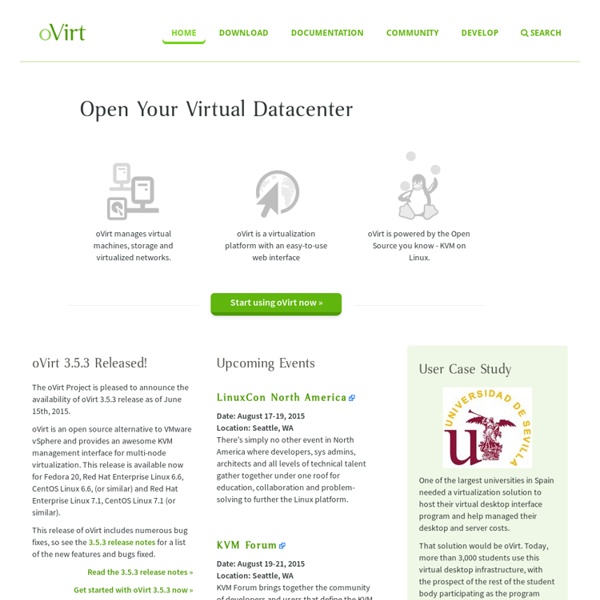



oVirt or No Virt: Notebook Edition — jebpages oVirt is definitely not intended to be run on your notebook, and running something oriented toward powering whole data centers on a single, portable machine seems like overkill, anyway. For a Linux-powered notebook machine like mine, virt-manager is a great tool for spinning up all manner of VMs, and–while I’ve yet to get it running properly – GNOME Boxes offers another promising option for taking advantage of the KVM hypervisor that’s built into the Linux kernel. However, since immersing myself in oVirt is part of my job now, and since I work with a lot of VMs on my work notebook, I wanted to see if I could come up with a notebook-friendly oVirt setup. I spent a bit of time fiddling with nested KVM – running an oVirt rig from within a VM on my machine. In order to restore the virtual bridge setup, you have to provide libvirt with the user name vdsm@rhevh and the password you’ll find at /etc/pki/vdsm/keys/libvirt_password.
oVirt OVirt uses the Java binding of libvirt. oVirt is a free platform virtualization management web application community project started by Red Hat. oVirt is built on libvirt which could allow it to manage virtual machines hosted on any supported backend, including KVM, Xen and VirtualBox. However, oVirt is currently focused on KVM alone. oVirt is open source software with backing from Red Hat and it is the base for Red Hat Enterprise Virtualization. oVirt can manage multiple hosts. It communicates with its host servers over HTTPS with XML-RPC, via an agent that is installed on the server - VDSMd (Virtual Desktops and Servers Manager daemon). oVirt, via VDSMd, also configures the hosts' networking configuration - link aggregation, VLANs, MTU settings, source routing to accomplish multiple gateways, and OpenStack Neutron integration. oVirt has 3 web-based front-ends - for administrators, users and power users (for self provisioning). See also[edit] External links[edit] Official website